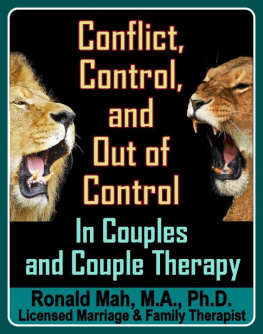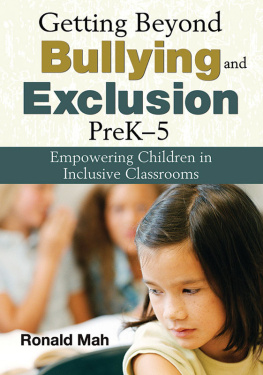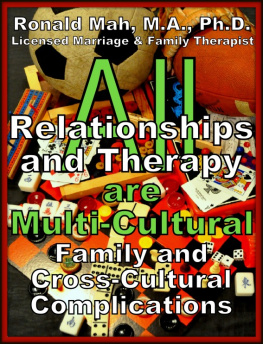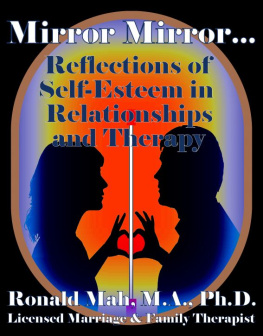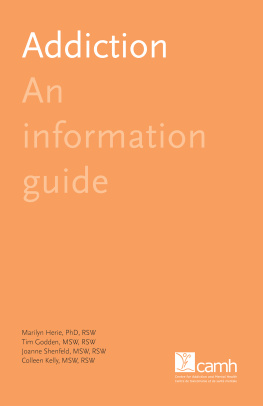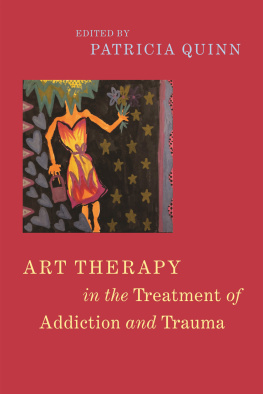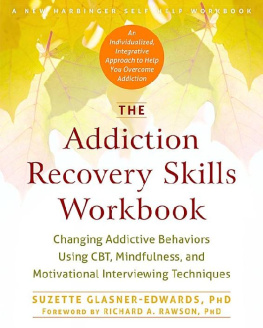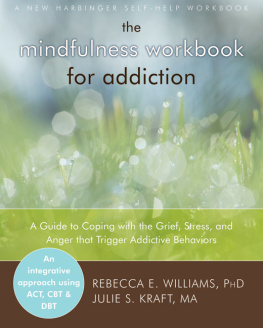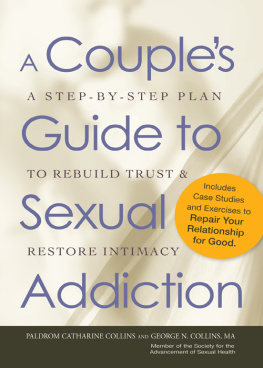Mine, Yours, and Ours, Addiction andCompulsivity in Couples and Couple Therapy
Published by Ronald Mah at Smashwords
Copyright 2013 Ronald Mah
Ronald Mah's website- www.ronaldmah.com
Smashwords Edition, License Notes
This ebook is licensed for your personalenjoyment only. This ebook may not be re-sold or given away toother people. If you would like to share this book with anotherperson, please purchase an additional copy for each recipient. Ifyou're reading this book and did not purchase it, or it was notpurchased for your use only, then please return to Smashwords.comand purchase your own copy. Thank you for respecting the hard workof this author.
****
LinkedTable of Contents
Abstract
"M ine, Yours, andOurs, Addiction and Compulsivity in Couples and Couple Therapy"demonstrates how the therapist who tries to choose to not work withclients or couples with addiction and compulsivity issues cannotconduct therapy with integrity. As individuals, couples, and familyenter therapy, so inevitably does addiction and compulsivity,whether substances or behaviors. The book demonstrates howaddiction or compulsivity may be overtly presented, alluded to, orhidden initially in therapy. Arguments about who has whataddiction: "mine" or "yours," can obscure addiction or compulsivitythat is shared or is "ours." Assessment for addiction andcompulsivity is critical in working with couples, since addictiveor compulsive elements in a couple effectively sabotage much of the"logical" work of therapy (insight work, communications training,etc.). The therapist must address addiction or compulsivity(perhaps, "first") for other processes to move forward becauserelationship problems and substance abuse, behavioral compulsion,or addiction are intricately intertwined. The book shows howambiguous or confusing individual or relationship behaviors becomeconceptually clear when addiction is uncovered. Problems aboutrelationship, finances, children and family, and work presented incouple therapy often have the shadow of addiction andcompulsivity.
T he therapist willalso learn strategies and interventions to avoid therapy beingstalemated by removing the necessity of the individual acceptingbeing labeled an "addict." Co-addiction and the co-addict areexamined in terms of mutual and reciprocal processes includingattachment needs and family and cultural models in the system ofthe addictive couple. The therapist is guided to follow vagueindications or probable concerns involving addiction andcompulsivity, since just about anything can lead to self-medicatingbehaviors. The therapy can be diverted to premature and ineffectiveproblem-solving rather than also addressing underlying causes forrepeated choices and behaviors despite inevitable adverseconsequences. The therapist is guided to address how a bad choiceclearly identified and previously experienced has become anaddictive behavior and/or a compelled choice that is, adestructive compulsion. The role of the therapist is presented inpsycho-education, as a witness, in prediction, and in relapseprevention in the process of therapy and change, along with amulti-layered intervention plan that incorporates inevitablerelapse.
****
**A uthor's Note:Other than public figures or people identified in the media, allother persons in this book are either composites of individuals theauthor has worked with and/or have been given different names andhad their personal identifying information altered to protect andrespect their confidentiality.
INTRODUCTION
CLEAR
T amlyn and Phillip camefor couple therapy because she felt that she was drinking too much.She had gone to an alcohol and drug treatment program, but they hadreferred her to therapy instead. She did not meet their criteriafor substance abuse. She was a sipper. She had a tall glass ofpeppermint vodka that she sipped all day long while managing thehousehold and the demands of several children. Rarely did she havemore than that. At the treatment center intake, they also foundthat she was not all that happy about her relationship with herhusband of twenty-five years. They suggested that couple therapymight be useful. In the first session, she revealed that she alsowas bulimic. She threw up just about every day- sometimes, a coupleof times a day. Phillip said he came to therapy support her in herrecovery.
M itchell and Kat camefor couple therapy because they had been having a lot of conflictover Mitchell's use of pain medication. Mitchell had been anoutstanding athlete through high school and college, playing two orthree sports. He had gotten an invitation to a professionalfootball team training camp. He had been doing pretty well throughthe preseason games and stood a chance to make the team as areserve on the "suicide squad" as the kick coverage and returnteams were called. Then in the last preseason game, he threwhimself at the blockers and by the worse of luck cracked vertebraein his lower back. That was the end of professional sports. It wasa tough recovery and he was not the best patient- having little orno patience. He pushed himself too hard too soon and sufferedfurther injuries rather than healing. His post-athletic careervocation in construction made ongoing demands on his physicality.Now at thirty-years-old, he had the gait and motion of aneighty-year arthritic old man. He was in chronic pain and was usingup his monthly ration of pain-killers in less than two weeks everymonth. He turned to alcohol, marijuana, and other street drugs(methamphetamine, in particular) for the remainder of each monthuntil he could get a new prescription. Kat was skeptical thatMitchell was in that much pain, but was really a drug addict whoused the physical issues as an excuse. She was on his case all thetime to cut back on all the medication whether prescribed orself-prescribed- legal or illegal. She also complained that insteadof being involved with her and the kids, he would lose himselfsurfing the Internet for hours and playing massively multiplayeronline games (also called MMO and MMOG) which are multiplayer videogames often involving thousands of participants, and available andactive around the clock.
T hese two couples:Tamlyn and Phillip and Mitchell and Kat came for couple therapythat involved issues of addiction and compulsivity in theirrelationships. The therapist concurred with the substance abuse anddependency treatment program that Tamlyn was not a "hard case."However, while alcohol arguably may not been her core issue, italong with her bulimia were almost certainly responses to deeperissues. Nevertheless, alcohol and bulimia contributed stress to herlife and relationship with Phillip. A more complete exploration oftheir relationship found that it was not just Tamlyn with addictionissues. Alcohol and drugs were always a key component between themfrom since they first started dating almost thirty years ago. Theyand Tamlyn, in particular adjusted their use when they hadchildren. When the children were younger and more demanding, Tamlynwas the dedicated proud mommy. She was at every PTA meeting, bakedthe cookies, and drove the fieldtrips. And, graciously acceptingthe accolades for her children's performances and awards. Philliphad continued to be a daily drinker who overindulged occasionally.At this point, Phillip also had a significant Internet pornographyhabit that effectively eliminated their sex life together, as wellas exhausting him as he stayed up late nightly perusing onetitillating site after another. It was likely that addictive orcompulsive behaviors were important emotional and psychologicalself-soothing mechanisms for both of them. Beyond each withaddiction issues, they shared addiction issues as a couple.Conversely, Mitchell claimed he used his prescribed medication, hisalcohol, and his street drugs strictly for his physical pain.Whether or not he used or abused them as an addict, Kat thought hedid. She knew of his demanding and critical father and how damagingit had been for Mitchell. Mitchell had not done well in school andbeen diagnosed with Attention Deficit Hyperactivity Disorder (ADHD)and been prescribed Ritalin. His father accused him of not tryinghard enough and being lazy. Kat knew about these blows to hisself-worth and his injuries, but she still felt he indulged himselfwith self-pity rather than choosing the correct path for himself,her, their marriage, and their children. Her suspicion and angerabout his use- his weakness to use whether justified or unjustifiedcontaminated their relationship. They had a cycle of use, abuse,frustration, anger, criticism, resentment, shame and depression,and further use in their addictive process. Addiction andcompulsivity clearly were clearly important if not fundamentalissues for couple therapy for these two couples.


